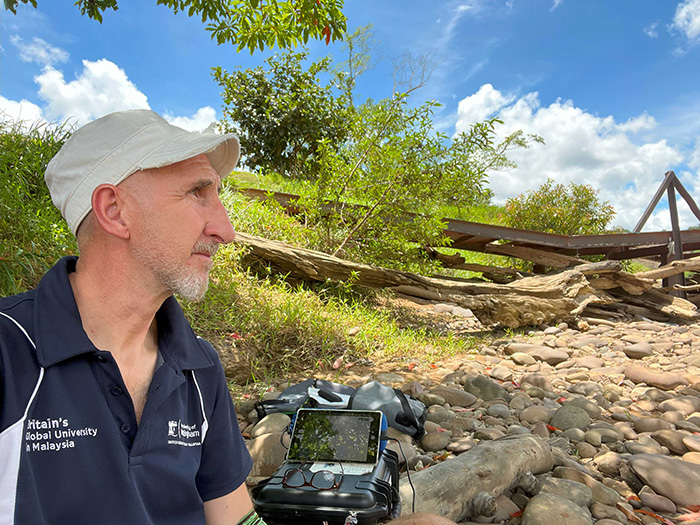On Earth Day, observed on 22 April and themed ‘Invest In Our Planet’, we would like to call your attention to the pressing matter of microplastic pollution.
Did you know that Malaysia is ranked third (after The Philippines and India) in the list of countries contributing most to marine plastic pollution? Dutch academic Lourens JJ Meijer highlighted these rankings in a paper published in 2021, and the position of Malaysia should be enough to cause us to reflect on our contribution to the global problem of plastic waste.

Professor Ting Kang Nee
When we think of plastic waste we tend to think of plastic bottles and bags, but once these everyday items break down, they cause a more insidious threat to the environment – microplastic. Microplastics are microscopic pieces of plastic that are often invisible to the naked eye, with the very smallest pieces being within the nano-size range (less than 1 µm, which is 0.001 mm). In fact some plastics are deliberately manufactured at this microscopic size range - for example, beads used in toothpaste and other personal care products, or used in industrial processes.
Scientists are only just beginning to understand the impacts of microplastic on human health. There is mounting evidence that it causes respiratory problems, especially for those with existing conditions, and increasing reports are now associating inflammatory bowel disease with the presence of microplastics in stool. Although there is no direct evidence to link microplastics and cancer, its presence can lead to tissue inflammation which may result in DNA damage, the initial stage of cancer development.
How microplastics are finding their way into our bodies is a cause for concern and action. For the past four years, our research team from the University of Nottingham Malaysia has been looking at microplastics in the Langat River in Selangor, as well as in the bodies of animals that live in the river. Our findings are very concerning.
We have found microplastic particles in every one of the hundreds of river water samples we have collected, in concentrations ranging from two to more than 80 pieces per litre of water. We have also found very high concentrations on the riverbed, with up to 150,000 pieces of microplastic sitting on the riverbed surface per square meter.
Most alarmingly, we have found microplastic in the body of almost every single animal we collected, including aquatic insects, mussels and fish. Fish were the most highly contaminated, and our latest work suggests that microplastic is not only present on the gills and in the guts of fish, but in their flesh. This is very worrying, as it means that people who consume fish caught from our rivers are likely to be routinely ingesting microplastic. The same applies to fish caught from oceans, where microplastic contamination is also very high.
The human health risks posed by microplastics mean that urgent action is needed. However, it is extremely challenging to reduce exposure to microplastic as it is already in the air we breathe and the water we drink, and very likely in much of the food we eat. Using filters on tap water, avoiding eating hot food or drinking hot drinks from plastic containers, and avoiding eating bottom feeders like shellfish and prawns are all good places to start.

Professor Chris Gibbins
Removing the microplastics already present in the environment will be difficult, but we can take action to reduce how much more we add. This can only be achieved with concerted efforts on multiple fronts. Individually we should be mindful of how much plastic we use, and especially how we dispose of it. Simple measures such as bringing our own stainless-steel containers to pack food bought from food stalls, and using glass or metal bottles to refill instead of buying bottled water go a long way in reducing the amount of single-use plastics that may end up in the environment.
While the public should be encouraged and empowered to adopt recycling habits, this needs to be supported by better waste management facilities and recycling options being made available by local councils. Taxes or other fiscal incentives could be introduced to help reduce plastic use and increase the use of recyclable plastics. Government funding for research to help find new ways of removing plastics and microplastics from our marine and freshwater ecosystems, and to help develop new biodegradable plastics, is greatly needed.
Malaysia has T-minus seven years to fulfil its Roadmap Towards Zero Single-use Plastics 2018-2030. Time is ticking. The attitudes and behaviours of everyone, from the authorities and industry to the public at large, need to change for the sake of both current and future generations.
Let’s all try to use less plastic between now and next year’s Earth Day.
Posted on 9th May 2023